2025.02.21
Hinamatsuri Special: Celebrate with Exclusive Kaiseki at Ise Sueyoshi
By Chef Yuuki Tanaka, owner of Ise Sueyoshi — Tripadvisor Best of the Best: Japan #1, World #12.(source).
What You’ll Learn in This Article
• What Hinamatsuri (Girl’s Day) is and why it’s celebrated in Japan
• The cultural significance of traditional foods served during Hinamatsuri
• Why this seasonal celebration matters to Japanese families and chefs
• How Ise Sueyoshi reinterprets Hinamatsuri through kaiseki cuisine
• Where you can enjoy a refined Hinamatsuri dining experience in Tokyo
Girls’ Day Charm
Japan’s beautiful spring is celebrated with Hinamatsuri, also known as the Doll Festival, held on March 3rd. This traditional event is a special day dedicated to wishing for the healthy growth and happiness of young girls. Families display Hina dolls, a cherished custom that embodies warmth, history, and the essence of Japanese culture.
Also called Momo no Sekku (Peach Festival), this occasion is marked by the decoration of elegant Hina dolls and the enjoyment of traditional dishes, reflecting Japan’s deep-rooted customs and appreciation for the changing seasons.
In this article, we explore the origins of Hinamatsuri, its traditional cuisine, and the ultimate Japanese cultural dining experience. Discover a unique way to immerse yourself in the spirit of spring in Japan.
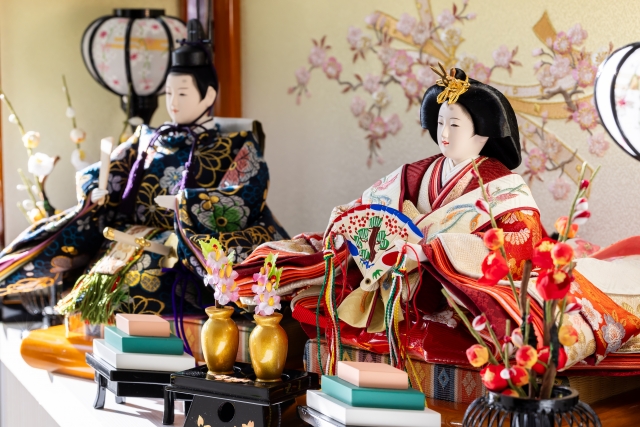
What is Hinamatsuri?
Hinamatsuri is a traditional Japanese celebration with a history spanning over 1,000 years. Its origins can be traced back to the Heian period (794–1185), when a courtly ritual called Nagashi-bina (floating dolls) evolved into the modern-day festival.
In the past, Japanese people made paper or straw dolls and set them afloat on rivers, believing that the dolls would carry away misfortune and protect children from harm. Even today, some regions in Japan continue this tradition, reinforcing the belief that the dolls act as guardians, taking on the child’s misfortunes and ensuring their well-being.
The Spread of Hinamatsuri in the Edo Period
During the Edo period (1603–1868), the practice of displaying Hina dolls became widespread among common people. As the festival became more elaborate, it was also called Momo no Sekku (Peach Festival), referring to the peach blossoms that bloom in early spring. The festival serves as a day to wish for the health, happiness, and prosperity of young girls.
The Meaning Behind Hina Dolls
The Hina dolls displayed for Hinamatsuri represent the noble court life of the Heian period. The top tier of the display features the Emperor and Empress (Dairi-bina), followed by the three court ladies (San-nin Kanjo), five musicians (Go-nin Bayashi), and other attendants arranged in descending order. Each figure has a symbolic meaning related to peace, harmony, and prosperity.
Hinamatsuri Today
Even today, the unique traditions of Hinamatsuri continue to be cherished in Japan. It remains one of the most important annual celebrations, dedicated to praying for the happiness and well-being of young girls. Families with daughters set up beautiful Hina doll displays, gather together, and enjoy special festive dishes on this day.
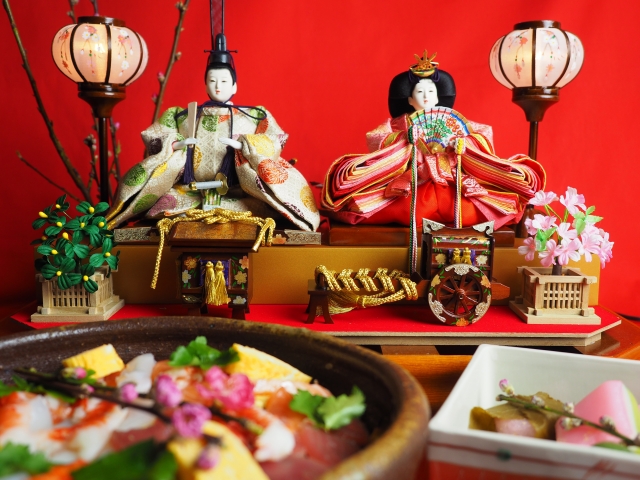
Shell Match
Read more: What is Kaiseki cuisine?
Hinamatsuri features a unique traditional game, especially enjoyed by young girls, called Kai-awase (shell matching). This game tests memory and intelligence using clamshells, specifically hamaguri clams, which have a special characteristic—each shell perfectly matches only its original pair. Originating as an elegant pastime among the Heian-period aristocracy, Kai-awase became a refined and artistic game.
How to Play Kai-awase (Shell matching)
- Prepare a set of hamaguri clamshells, each consisting of two perfectly matched halves. Traditional versions feature hand-painted poetry or intricate artwork on the inner surfaces.
- Place the shells face-down, similar to a memory game, and try to find the correct matching pairs.
- A successful match is determined when the two halves fit together perfectly.
Symbolism of Kai-awase
Kai-awase is more than just a game—it carries a deeper symbolic meaning. Because a pair of hamaguri shells fit only with their original counterpart, they have long been associated with harmony in marriage and good fortune in relationships. Historically, noblewomen played this game during wedding ceremonies as a way to symbolize a happy and lifelong union with their spouse.
While the practice of playing Kai-awase has become less common today, its cultural significance remains an essential part of Hinamatsuri. Beautifully decorated shells are still displayed as ornaments, and hamaguri clams continue to be featured in Hinamatsuri cuisine, particularly in dishes like clear clam soup (hamaguri osuimono).
This traditional game reflects the Japanese wish for happiness and lifelong companionship, making it a heartfelt and meaningful part of the Hinamatsuri celebration.
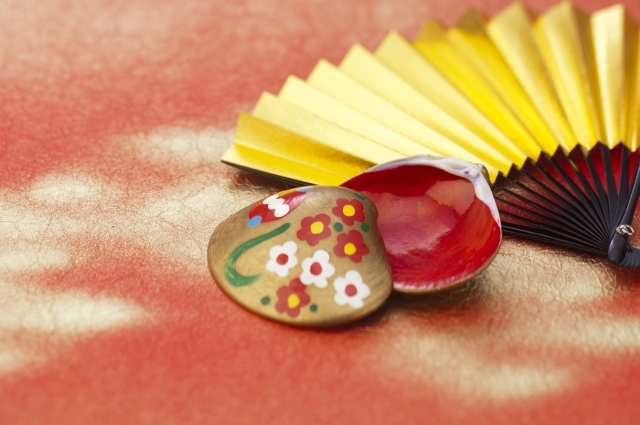
Cultural Tips
It is believed that Hina dolls should be put away as soon as Hinamatsuri ends. According to tradition, leaving the dolls displayed for too long may cause delays in a daughter’s marriage. This superstition reflects the deep love and concern that parents and family members have for their daughters, wishing them happiness and a bright future.
Another significant aspect of Hinamatsuri is the decoration of peach blossoms. Peaches are believed to have protective powers against evil spirits and are also a symbol of spring’s arrival. For centuries, the peach blossom has been associated with longevity and good health, making it an essential part of Hinamatsuri celebrations.
Hinamatsuri is an occasion where young girls take center stage. The delicate pink hues of peach blossoms, combined with the joyful atmosphere of the festival, create a truly heartwarming celebration.
Hinamatsuri Feast
Hinamatsuri is not just about decorations—it is also a celebration of seasonal cuisine. Special dishes are prepared to mark the occasion, allowing families and loved ones to come together and enjoy the flavors of spring while celebrating this important festival.
Traditional Hinamatsuri Dishes
・Chirashizushi (Scattered Sushi)
Chirashizushi is one of the most iconic dishes enjoyed during Hinamatsuri. This beautifully arranged sushi bowl features fresh seafood, thinly sliced egg (kinshi tamago), and seasonal vegetables such as rapeseed blossoms (nanohana). The bright colors and delicate presentation of chirashizushi reflect the arrival of spring and the joy of the celebration.
・Hamaguri Osuimono (Clear Clam Soup)
This elegant soup features hamaguri clams, which hold deep symbolic meaning during Hinamatsuri. The tradition of kai-awase (shell matching game) is closely linked to this dish. Since the two halves of a clam’s shell fit together perfectly with only their original pair, they are seen as a symbol of a happy and harmonious marriage. Because of this, hamaguri soup is often associated with good fortune, new beginnings, and lasting relationships.
・Hishimochi & Hina Arare (Diamond-shaped Rice Cakes & Colorful Rice Crackers)
Hishimochi is a layered rice cake featuring three distinct colors—green, white, and pink—each symbolizing different aspects of the changing seasons:
- Green represents the fresh leaves and vitality of nature.
- White symbolizes purity, snow, and the lingering winter cold.
- Pink signifies peach blossoms and the arrival of spring.
Similarly, Hina Arare, small bite-sized rice crackers, are also colored in three main shades, mirroring the transition from winter to spring. These treats are believed to ward off evil spirits and bring health and happiness to young girls.
・Shirozake (Sweet White Sake) & Amazake (Fermented Rice Drink)
One of the traditional beverages of Hinamatsuri is shirozake (sweet white sake). The milky white appearance of this drink symbolizes purity and cleanliness, aligning with the festival’s wish for young girls to grow up healthy and happy. The mild sweetness and smooth texture make it a fitting accompaniment to the celebratory atmosphere.
Shirozake has been enjoyed in connection with Hinamatsuri since the Edo period (1603–1868) and is made from steamed glutinous rice, rice malt (koji), and shochu (distilled liquor), which is then fermented for about a month and finely ground into a smooth liquid. As it contains alcohol, it is traditionally consumed by adults during the festival.
A similar beverage often confused with shirozake is amazake, which can be made in two ways:
- Shirozake: Made by fermenting steamed rice with rice malt and shochu. Contains alcohol.
- Amazake: Made from either rice malt or sake lees, with both alcoholic and non-alcoholic versions available.
Because Hinamatsuri is often celebrated by families with young children, non-alcoholic amazake has become the preferred choice in modern times, allowing everyone to enjoy a sweet and nourishing drink together.
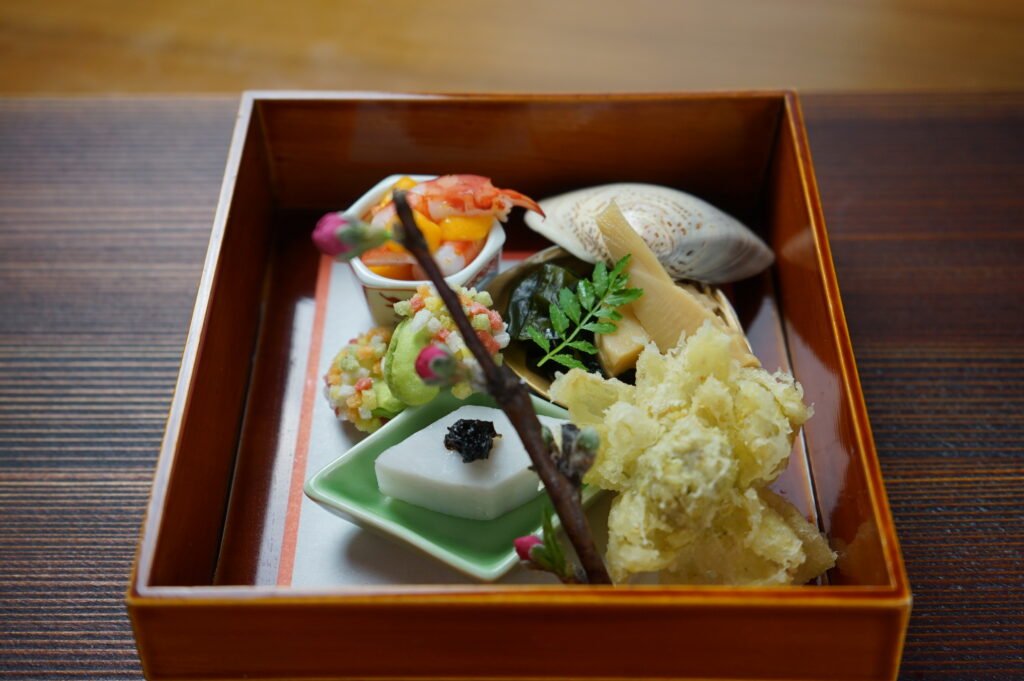
Ise Sueyoshi’s Hinamatsuri
At Ise Sueyoshi, we offer a monthly seasonal Kaiseki course that reflects the essence of Japanese culinary traditions. During the Hinamatsuri season, we create a special Kaiseki experience that highlights the beauty of spring using the finest seasonal ingredients.
Our Hinamatsuri Kaiseki features dishes inspired by traditional symbols of the festival, such as peach blossoms, Hishimochi (layered rice cakes), and Kai-awase (shell matching game). The careful presentation of each dish captures the elegance and charm of the season:
- Peach blossoms, a symbol of purity and protection, are delicately arranged to enhance the visual appeal of the course.
- Hishimochi-inspired dishes incorporate vibrant colors and textures that celebrate the transition from winter to spring.
- Hamaguri (clam shells) are elegantly used for plating, paying homage to the traditional shell-matching game that represents harmony and good fortune.
Additionally, our specially curated drink pairing includes Shirozake (sweet white sake), a beverage traditionally enjoyed during Hinamatsuri. The mild sweetness and smooth texture of Shirozake perfectly complement the refined flavors of Kaiseki cuisine, enhancing the harmony between food and drink.
At Ise Sueyoshi, we invite you to experience the spirit of Hinamatsuri through a sophisticated and immersive Kaiseki dining experience, where each dish tells a story of Japan’s rich cultural heritage.
Read more about Sake Pairing:
Enhance Your Kaiseki Experience in Tokyo: Sake Pairing for Ultimate Satisfaction
For more about our vegan and gluten-free philosophy, please visit this page.
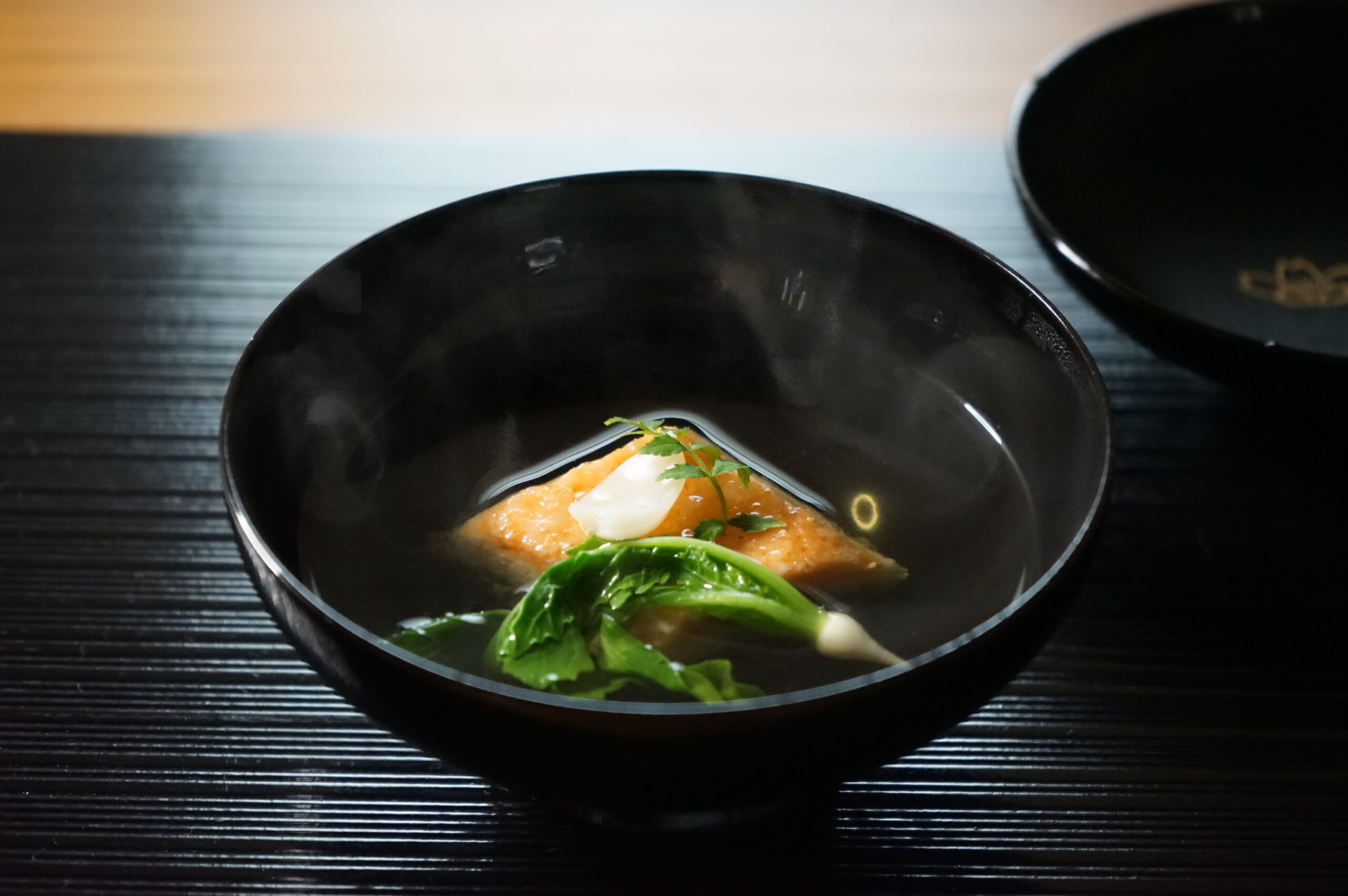
Cultural Kaiseki
Kaiseki cuisine is a refined culinary art that evolved alongside the Japanese tea ceremony, embodying the spirit of hospitality (omotenashi) and the aesthetic appreciation of seasonal transitions.
Rooted in the principles of the tea ceremony, Kaiseki follows a structured and artistic approach to dining, emphasizing:
- Seasonality – Showcasing ingredients that highlight the beauty of each season.
- Natural Flavors – Bringing out the inherent qualities of each ingredient.
- Visual Elegance – Thoughtfully crafted presentations that reflect Japanese aesthetics.
🔗 Read more about Kaiseki Cuisine
At Ise Sueyoshi, our seasonal Kaiseki course during the Hinamatsuri period features Japan’s finest delicacies, including:
- Wild mountain vegetables (sansai), capturing the essence of spring.
- Ise lobster (Ise ebi), a luxurious ingredient from the chef’s hometown.
- Premium Wagyu beef, celebrated for its rich umami and melt-in-your-mouth texture.
- Fresh Bluefin Tuna (Maguro) and Fugu (pufferfish), both prized in Japanese cuisine.
Each dish is carefully crafted to honor the changing seasons, presenting a harmonious balance of taste, texture, and visual beauty that defines Kaiseki dining at Ise Sueyoshi.
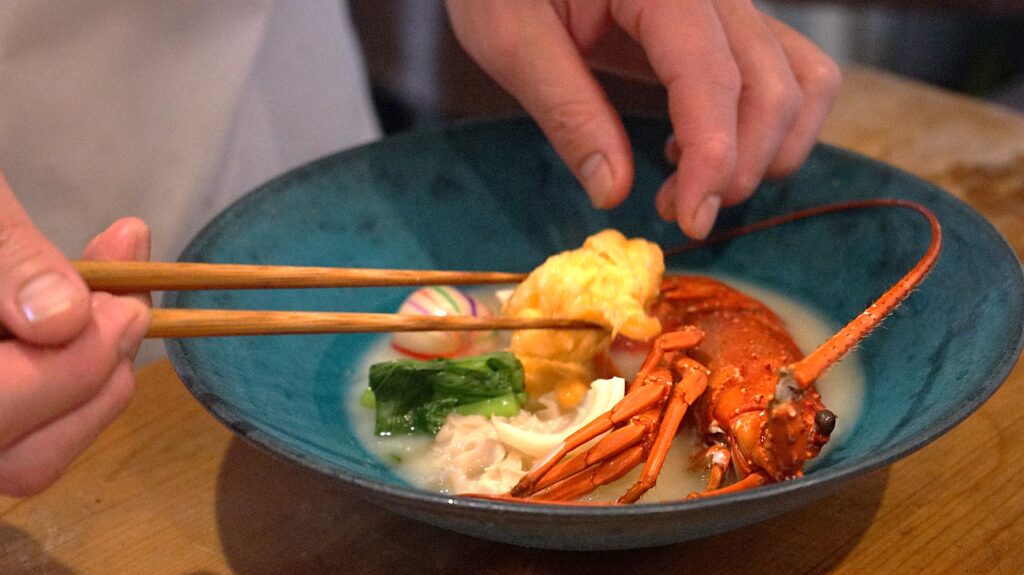
Kaiseki for Everyone
At Ise Sueyoshi, we strive to accommodate all guests by offering not only traditional Kaiseki courses featuring fish and meat, but also special Kaiseki menus tailored for guests with dietary restrictions, including vegetarian, vegan, and gluten-free options.
We understand that guests at the same table may have different dietary preferences, and we take great care to ensure that each guest enjoys a customized Kaiseki experience while maintaining the harmony and authenticity of Japanese cuisine.
Beyond our vegan and vegetarian options, we are happy to accommodate special requests upon reservation, such as:
✔ Gluten-free Kaiseki
✔ Allergy-friendly Kaiseki (e.g., shellfish-free)
✔ Other dietary restrictions upon request
Many guests choose Ise Sueyoshi for special occasions such as anniversaries and birthdays. One of our most requested experiences is the Shiogama (Salt-Crusted Dish), an elegant and symbolic dish that enhances the joy of a celebratory meal.
フォームの始まり
For more about our vegan and gluten-free philosophy, please visit this page.
For more about Fugu delicacy and its unique culinary experience, please visit this page:
Poison Fish: Exploring Fugu, Japan’s Most Expensive Delicacy
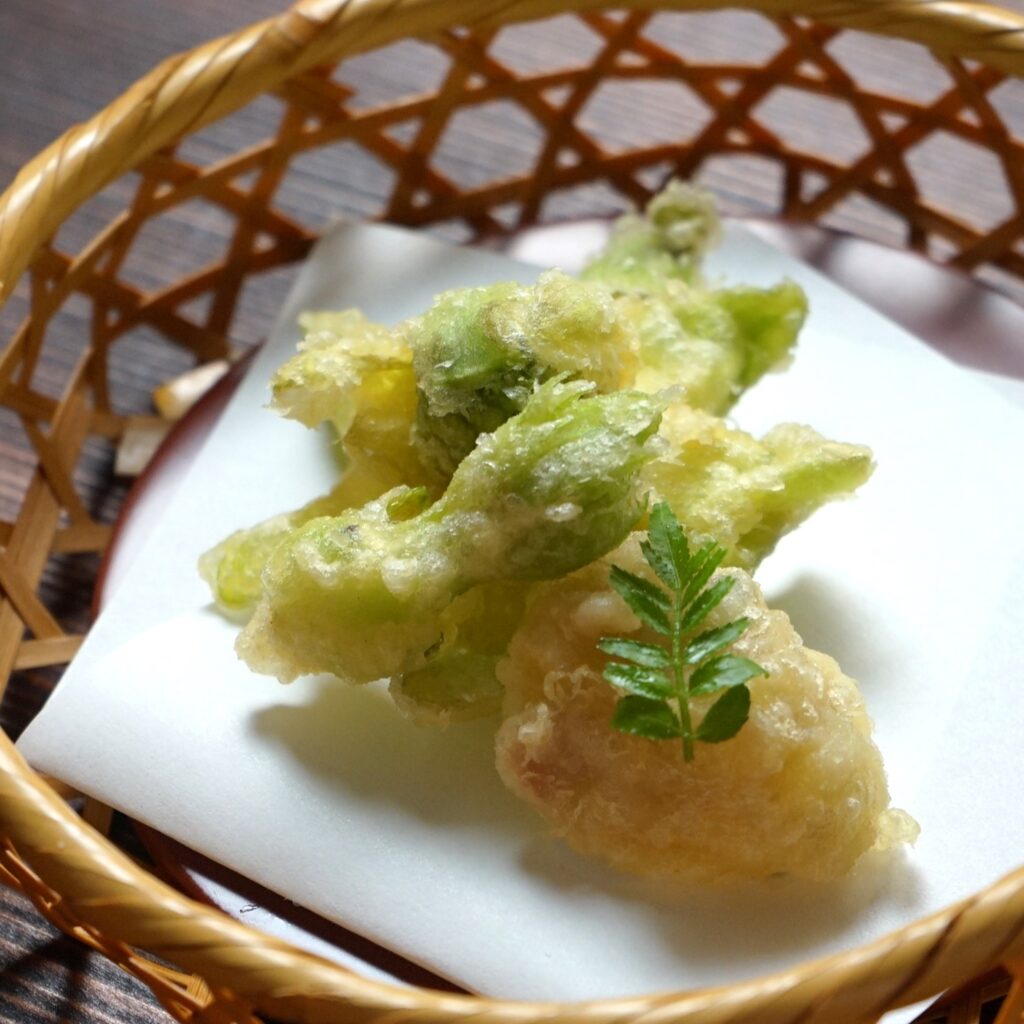
Meet Chef Yuuki
Chef Yuuki Tanaka, the mastermind behind Ise Sueyoshi, is a highly experienced Kaiseki chef with 32 years of expertise in Japanese cuisine. At his intimate counter-style restaurant in Hiroo, Tokyo, he crafts exquisite Kaiseki dishes with meticulous attention to detail, offering a world-class omotenashi experience.
His passion lies in showcasing the finest seasonal ingredients from his hometown of Ise, where Japan’s rich culinary heritage thrives. Every dish is a work of art, carefully prepared to engage all five senses, creating an unforgettable gastronomic journey.
Beyond the cuisine, Chef Yuuki is dedicated to bridging cultures through food. He personally explains each dish in fluent English, ensuring that international guests can fully appreciate the depth of Japanese culinary traditions in a warm and private setting.
Chef Yuuki Tanaka’s Philosophy
✔ Expressing Japanese culture and seasonality through his dishes
✔ Curating personalized Kaiseki experiences based on guests’ preferences
✔ Providing insightful English explanations, enriching cultural appreciation
In the exclusive and intimate ambiance of Ise Sueyoshi, guests not only enjoy exceptional cuisine but also learn about the artistry, traditions, and philosophy behind Japanese fine dining.
When you visit, don’t hesitate to ask about his inspirations, the seasonal highlights, or the unique techniques behind each dish—you will surely be captivated by his passion and expertise.
Read More about Chef Yuuki:
The Story of Tokyo’s Best Chef, Yuuki Tanaka: Bringing the Blessings of His Hometown to the World
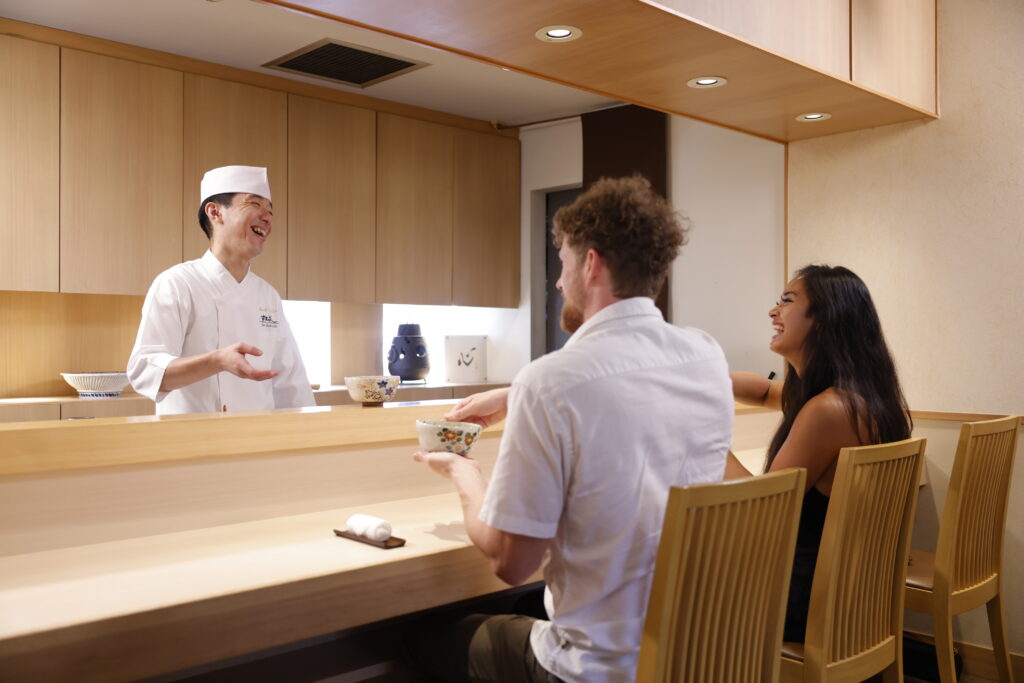
Nov 2022 • friends
My friend and I had been anticipating our return visit to Tokyo since March of this year. So it was wonderful for one of our first dinners to be at Ise Sueyoshi. Under the warm hospitality and refined palate of Yuuki-san, we were brought on a culinary journey through the myriad delicacies of Mie prefecture. Yuuki-san’s commitment and love for his hometown shone through his creative yet authentic renditions of the kappo style meal that was perfectly in tune with the autumnal produce paired with a bright Mie sake. The fact that we were the only 2 diners that sitting was a wonderfully extravagant privilege as we had the full attention of Yuuki-san but his exquisite cuisine and hospitality are too good to selfishly keep to ourselves- so we do hope that many more foodies will discover Ise Sueyoshi so that this gem of a restaurant can thrive as it so deserves. Domo arigato Yuuki-san. Ps: the restaurant is a bit hard to find with minimal signage so do allot more time to finding it- it’s in a small nondescript building and the signage indicating the restaurant is very tiny and only found once inside the lift on the button panel. So be brave and enter the lift despite the uncertainty!
We are proud to continue delivering an exceptional dining experience that earned us the Tripadvisor Travelers’ Choice Best of the Best 2024 award, ranking among the Best Restaurants in Tokyo. Our commitment to excellence in service and our dedication to offering the finest kaiseki dining experience in Tokyo remain unwavering. Discover more about our journey to becoming one of the best restaurants in the city[here].

Visit Ise Sueyoshi
Location: Conveniently located 12 minutes from Roppongi Station and 8 minutes from Hiroo Station.
Hours: Open 5:00 PM – 10:00 PM, reservations only. Closed on Sundays and Mondays.
Book Your Experience ☟
Conclusion
At Ise Sueyoshi, we humbly invite you to experience a dining journey that caters to all dietary needs. Whether you’re vegan, halal, or have specific preferences, we are here to create a memorable and inclusive dining experience for you, especially for special occasions like a honeymoon.
Looking ahead to 2025, we promise to continue striving as the “Best Kaiseki Restaurant,” delivering unique culinary experiences that reflect the beauty and depth of Japanese culture. Reservations are now open through the end of 2025. We encourage you to plan early and join us for a special dining experience. May our dishes and hospitality create cherished memories for your journey.
Recommended Blog Posts
On our blog, we offer further insights into Tokyo’s rich food culture and the unique culinary experiences we provide at Ise Sueyoshi. Be sure to check out these recommended posts:
Hanami in Japan: Cherry Blossoms or Plum Blossoms?
@isesueyoshi
o 🏆 Awarded the prestigious Best Luxury Restaurant by TripAdvisor
o 🌍 Ranked 2nd worldwide, 1st in Japan, and 1st in Asia
o ⭐ Google rating of 4.9 (as of 2024)
o ✅ Vegan-friendly
o ✅ Halal selections
o ✅ Gluten-free options
o ✅ Vegetarian delights
o ✅ Pork-free choices
o ✅ Perfect for pescatarians
o 🌈 Welcoming and inclusive environment for LGBTQ guests
o 🚃 Just a 12-minute walk from Roppongi Station or 8-minutes from Hiroo Station
o ⏰ 5:00 PM – 10:00 PM (reservations-only)
o 📅 Closed on Sun and Mon

